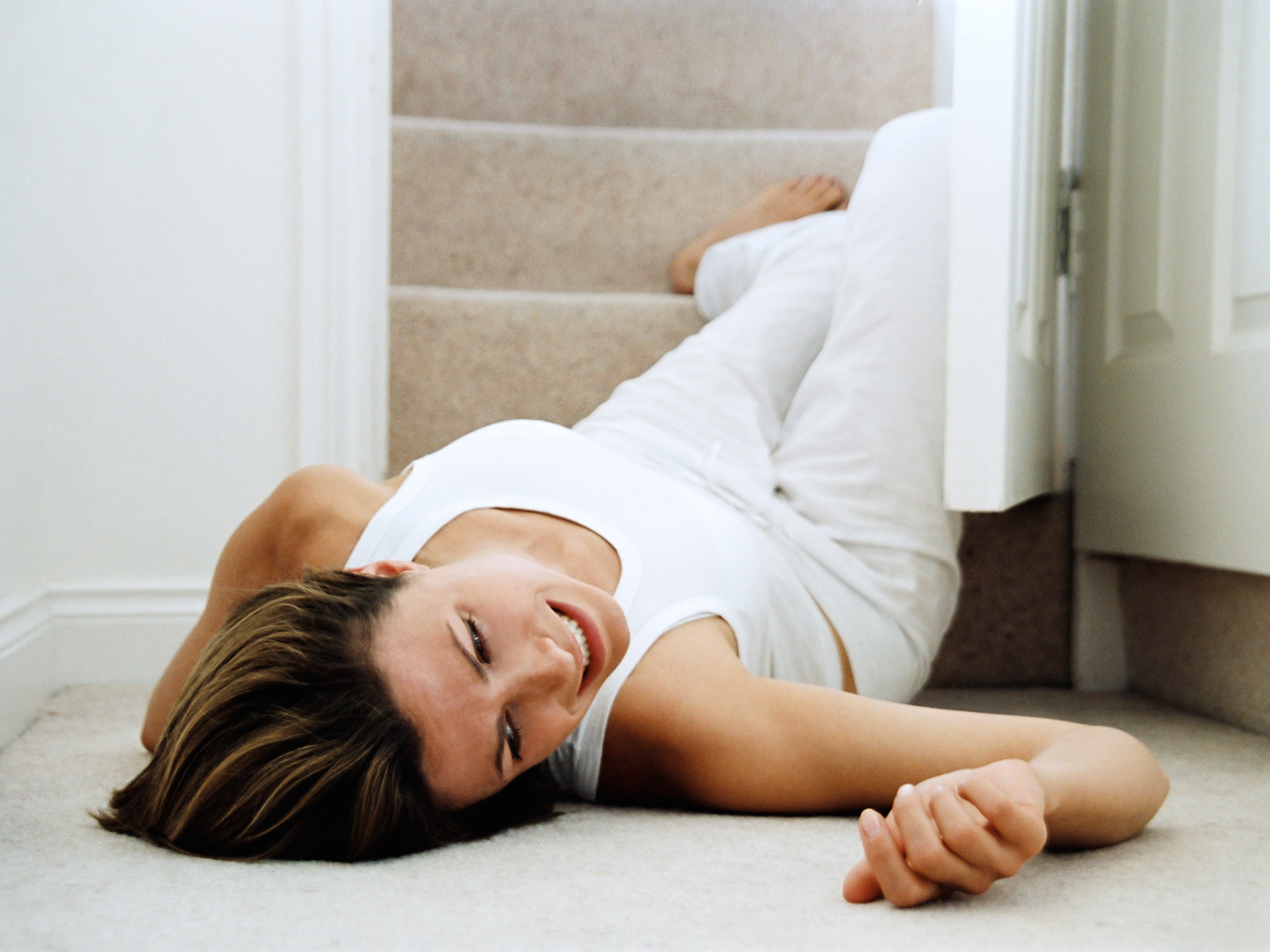Get Easy Health Digest™ in your inbox and don’t miss a thing when you subscribe today. Plus, get the free bonus report, Mother Nature’s Tips, Tricks and Remedies for Cholesterol, Blood Pressure & Blood Sugar as my way of saying welcome to the community!
5 medicines that can increase your fall risk

Last week something happened to me that felt really weird…
I took a tumble down a very short set of stairs in my house — only about four steps total, and they were carpeted, thank goodness.
Fortunately, the only thing that was hurt was my pride… but I had a hard time shaking how it made me feel.
I go through life feeling that I am very much in control. But when you fall, your brain has a hard time wrapping itself around what your body is doing. In that moment, all your faculties are in an utter state of confusion. Until you find yourself on the floor, hopefully uninjured, like me, wondering what the heck just happened…
Why falls are a big deal
The National Institutes of Health Osteoporosis and Related Bone Disease National Resource Center has spent a lot of time looking into why people fall.
And for very good reason.
Falls are the leading cause of death from an injury for people aged 65 and older. Hip breaks can be especially deadly.
In fact, one-quarter of seniors who fracture a hip from a fall die within six months of the initial injury. Women, between the ages of 65-69, who break a hip are five times more likely to die within a year following a hip break than women without the injury.
For women, osteoporosis is usually a factor in falls and breaks. But it’s not the only thing to watch for. There are some other very surprising reasons to be aware of…
Medicines that increase your fall risk
There are many things that can trip you up, including clutter, the grandkids toys or a rug that slides.
These are obvious reasons we fall, but there are others that may be a little surprising. So, let’s start with the ones that you might not be watching for, starting with the medicine you take.
Even if you’re like me and go around thinking you’re in control of anything your body does, medicines can be working against you.
Many can make you feel dizzy, slow you up, or make you feel a little (or a lot) confused. The types of medicines most often associated with an increased risk of falling are:
- Blood pressure pills
- Heart medications
- Diuretics (water pills)
- Muscle relaxants
- Sleeping pills
So, if you’re on any of these, and feel that you could take a tumble, check with your doctor on your dosage. But go a step further and take these precautions around your home that can help you (or anyone in your home) avoid a fall…
How you can avoid a fall
The NIH has several great suggestions to help you have surer footing around your home. Their suggestions advise that you:
- Keep rooms free of clutter, especially on floors
- Use plastic or carpet runners
- Wear low-heeled shoes
- Do not walk in socks, stockings, or slippers
- Be sure rugs have skid-proof backs or are tacked to the floor
- Be sure stairs are well-lit and have rails on both sides
- Put grab bars on bathroom walls near tub, shower, and toilet
- Use a non-skid bath mat in the shower or tub
- Keep a flashlight next to your bed
- Use a sturdy step stool with a handrail and wide steps
- Add more lights in rooms
- Buy a cordless phone so that you don’t have to rush to the phone when it rings and so that you can call for help if you fall.
When you’re walking about outside, follow these tips:
- Use a cane or walker, if needed.
- Wear rubber-soled shoes so you don’t slip
- Walk on grass when sidewalks are slick
- Put salt or kitty litter on icy sidewalks.
Lowering your fall risk
Remaining active so that your leg strength and balance remain in tip-top shape is the best way to lower your risk of a debilitating or even deadly fall.
How would you rate your balance right now? If you’re not sure how good — or how bad — it might be, try this fall risk test.
If you’re ready to improve your balance, there are a few exercises the NIH recommends that can in help:
- Stand on one leg at a time for a minute and then slowly increase the time. Try to balance with your eyes closed or without holding on.
- Stand on your toes for a count of 10, and then rock back on your heels for a count of 10.
- Make a big circle to the left with your hips, and then to the right. Do not move your shoulders or feet. Repeat five times.
Personally, I enjoy following these balance exercise videos, provided by my colleague Dr. Mark Wiley.
Now, I know exactly why I took that tumble down the stairs last week…
I tend to shuffle my feet around the house and the rubber tip on the toe tip of my tennis shoe drug against the carpet, slowing that one foot up. Before I knew it, I was almost head over heels at the bottom of the stairs.
So, in addition to the pointers above, make note of the things that have tripped you up in the past — and slow down, for your health’s sake.
Editor’s note: Did you know that when you take your body from acid to alkaline you can boost your energy, lose weight, soothe digestion, avoid illness and achieve wellness? Click here to discover The Alkaline Secret to Ultimate Vitality and revive your life today!
Source:
What Are Ways to Prevent Falls and Related Fractures? Fast Facts: An Easy-to-Read Series of Publications for the Public — The National Institutes of Health (NIH)













